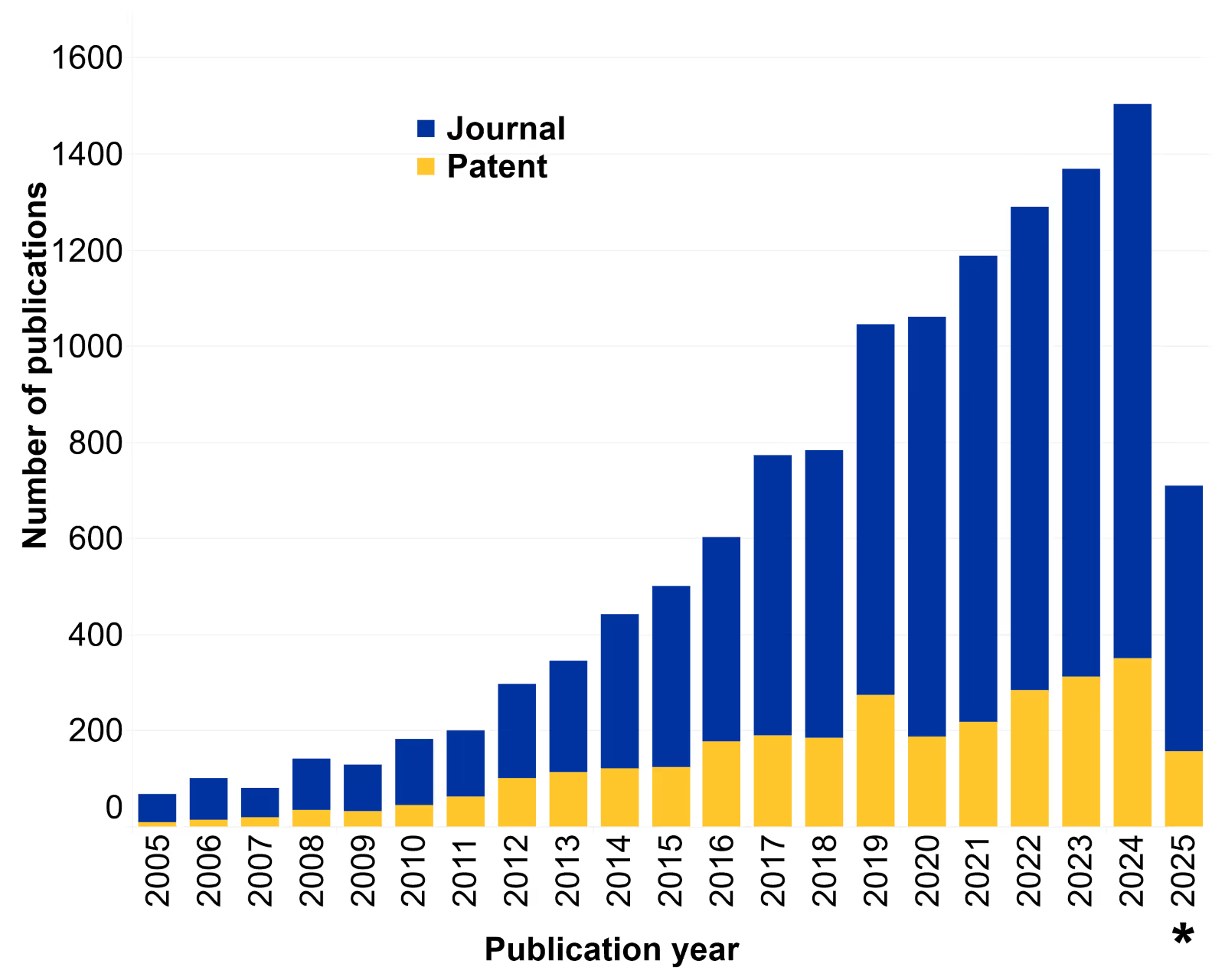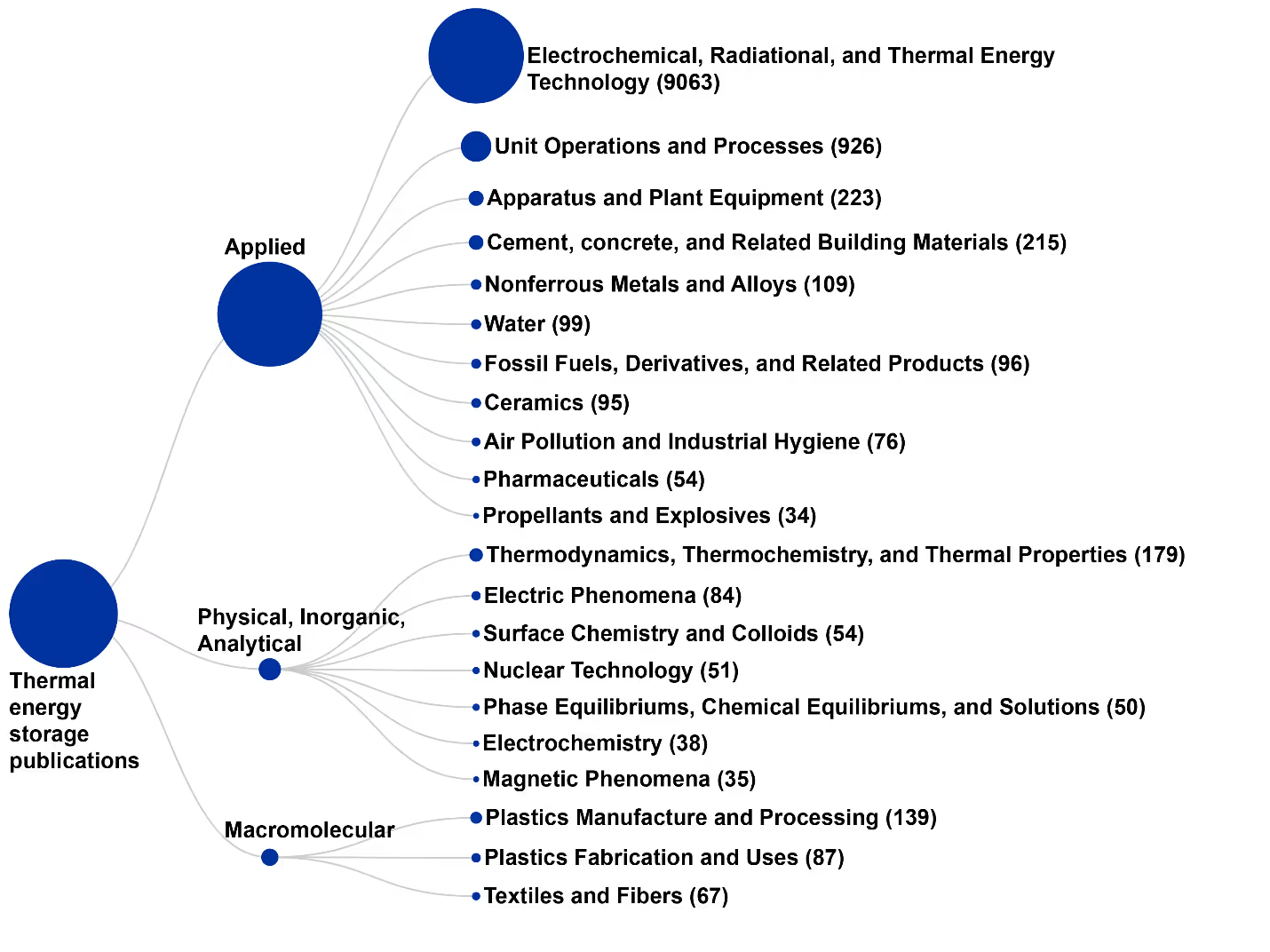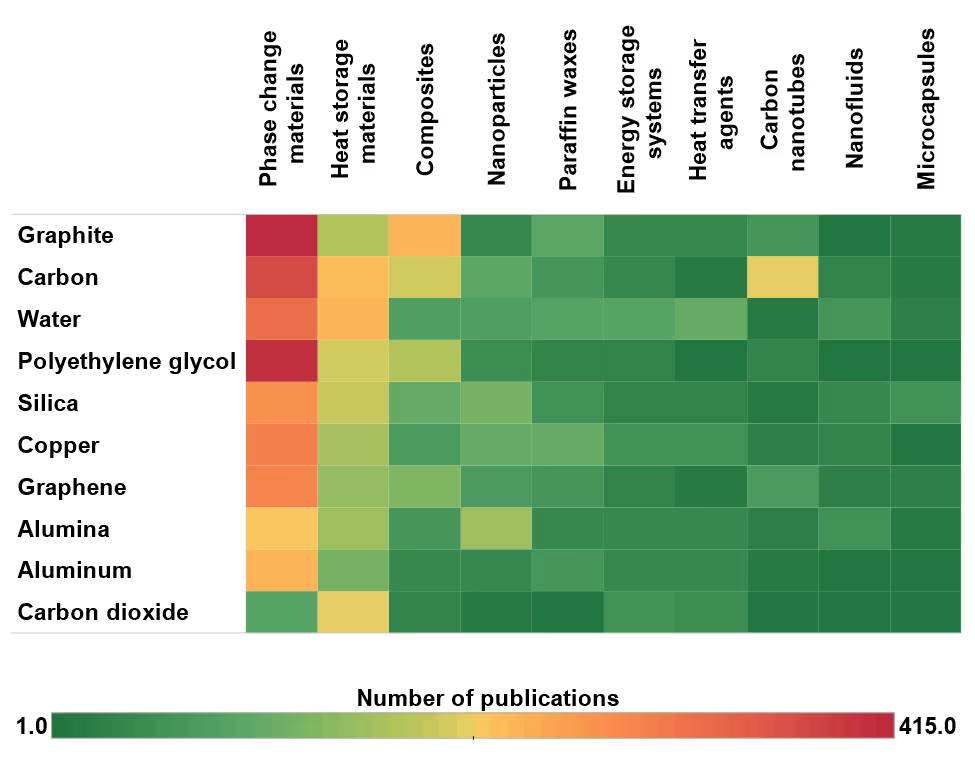Renewable energy sources like wind and solar are crucial to reduce emissions. Yet to fully take advantage of these sources, excess energy must be stored so it’s available when the wind isn’t blowing or the sun isn’t shining. Battery energy storage has grown to fill this need, but what if there were other cost-effective and energy-efficient methods?
Thermal energy storage is one such method, and multiple analyses, including technical-economic and life cycle analyses, indicate that thermal energy storage has lower costs and less environmental impact compared to many widely used renewable energy storage technologies. In addition, the energy efficiency and energy density of thermal energy storage systems is higher than many other common energy storage technologies such as mechanical and chemical storage.
Thermal energy storage offers the distinct benefit of managing temperatures inside buildings — a process that is more important every year as temperatures rise and heatwaves become more severe. These systems capture heat during the day and passively release it at night as temperatures drop. Essentially, thermal energy storage from renewable sources can keep buildings cool without adding more atmospheric emissions, thereby breaking the negative feedback loop of using more air conditioners powered by fossil fuel sources.
Given these benefits and the urgency of reaching net-zero emissions by 2050, as stipulated by the 2015 Paris Agreement, we analyzed the CAS Content CollectionTM, the largest human-curated repository of scientific information, to understand how this technology is developing. We found key concepts were recurring in the literature, suggesting that more breakthroughs could take place at the intersection of these ideas.
How thermal energy storage works
Thermal energy storage captures and stores energy in the form of heat using materials like molten salt, phase change materials (PCMs), or heated rocks for later conversion back to electricity. Thermal batteries, also known as thermal energy storage systems, are innovative technologies that capture and store surplus thermal energy, whether it's heat or cold, for future use.
By leveraging specialized materials and processes that can absorb, store, and release thermal energy as needed, these systems play a vital role in optimizing energy efficiency and reliability. This is valuable in lowering industrial emissions because the stored heat can be used directly in high-heat industrial processes or to create steam to power those processes.
There are numerous types of materials that can store thermal energy, as seen in Table 1:
Table 1: Types and examples of thermal energy storage materials.
Publication trends show extensive opportunities
How is thermal energy storage technology evolving, and is it close to widespread commercialization? Our analysis of the CAS Content Collection reveals not only precipitous growth in publications relating to thermal energy storage, but also numerous related concepts that show where breakthroughs are likely to occur.
We found steady, consistent growth in both journal and patent publications over the last 20 years (see Figure 1).

Growth has been notable since 2019, and the continued increase in patents shows that these technologies are reaching commercial viability.
We deepened our analysis further by mapping the number of publications to specific topical sections in the CAS Content Collection, and this shows the broad applicability of thermal energy storage to numerous fields (see Figure 2).

As expected, most publications are related to the CAS topical section on electrochemical, radiational, and thermal energy technology, followed by other understandably related sections such as unit operations and processes, apparatus, and thermodynamics. The topical section on concrete and other construction materials has many publications, which mostly address incorporating PCMs to improve buildings’ energy efficiency. The concrete containing PCMs will absorb the heat during the day when the outside temperatures are high, shielding the indoors from high temperatures, then release the heat during cooler outdoor temperatures.
We found notable numbers of publications in topical sections relating to energy, such as applications in wind and solar energy to balance supply and demand. Thermal energy storage can also help transition nuclear energy from its traditional base load power generation to become adaptable to varying power demands.
The number of publications relating to water shows that thermal energy storage also presents opportunities in sustainable, all-day, all-weather desalination. By storing and consistently providing the thermal energy generated from solar energy, these systems can drive the evaporation of saline waters.
Some of the more unique topics with thermal energy storage publications involve various materials. The topical section on non-ferrous metals and alloys has a considerable number of publications due to these materials’ use in the construction of thermal energy storage systems, and a few studies also reported their use as PCMs.
Topics related to plastic manufacturing and fabrication also appear in numerous publications, likely due to the variety of polymers containing PCM compositions that were found to be effective in thermal energy storage applications. Textiles and fibers also feature prominently where thermal energy storage materials are used to make smart textiles and thermochromic fabrics.
The thermal energy storage capabilities of PCMs are even useful for various biomedical applications, such as photothermal therapy, targeted drug delivery, and pharmaceuticals.
Concept co-occurrences bring materials and usage together
Another way to evaluate the intersection of ideas and see where innovations may take place is to examine the co-occurrence of concept pairs. We analyzed these pairs and their growth in recent years, spanning 2022-2024 (see Figure 3).

Figure 3A shows the top 10 concept pairs with the highest growth. PCMs, solar energy collectors, and heat pumps are some of the concepts that grew significantly. Microencapsulation, a technique used to increase thermal conductivity and prevent reactivity of the PCMs with the surrounding materials, stands out due to the high number of publications and growth rate. This technique has been used to improve the overall efficiency of thermal energy storage processes.
We further narrowed the high-growth concept pairs by looking into combinations of substance class concepts and application/usage/process concepts, and the top 10 such concept pairs are shown in Figure 3B.
Alkanes, paraffin, and polyoxyalkylenes are among the highest-growing substance classes in recent years. Following these are concepts such as microcapsules and composites. As paraffin wax is often encapsulated to form microcapsules to improve its stability and cyclability, we saw that these concepts had high growth. Alkanes, another high-interest topic, are often combined with materials such as polymers, various forms of carbon, and inorganic materials to improve thermal conductivity, avoid leakage, and provide chemical stability.
Figure 3C shows high-growth concept pairs made of substance class concepts and property concepts. Other than molten salts, the high-growth substance classes are similar to the ones found in Figure 3B. The properties often associated with them are infrared (IR) spectra, surface structure, enthalpy, solidification, and solar energy.
The stress-strain relation of PCMs such as polyoxyalkylenes are often studied to identify their structural integrity and optimize performance. IR spectra often co-occurs with PCMs due to its use in studying the chemical structure, phase transitions, and thermal stability of PCMs.
We also examined the co-occurrence of substances and their usage (see Figure 4).

Graphite is one of the most used substances in PCMs. Composites containing graphite and PCMs are used for better thermal energy storage performance due to graphite’s high thermal conductivity and porous structure.
Similar to graphite, copper, graphene, and aluminum are also combined with PCMs to improve their thermal conductivity. Polyethylene glycol-containing composites are also one of the most widely reported phase change materials. These co-occurrences point to which materials already play key roles in thermal energy storage and those that may be worth exploring further.
Thermal energy storage solutions reach the market
Many companies are already marketing thermal energy solutions across several applications. As we saw with the growth in patents, this shows how the technology is becoming viable. Some notable examples include:
- Peak shaving: Ice Energy provides thermal energy-based air conditioning solutions to avoid electricity consumption when prices are high. Sunamp, meanwhile, uses solar energy or off-peak grid electricity to power hot water solutions.
- Industrial energy: Electrified Thermal Solutions makes thermal batteries that store renewable electricity in the form of heat, then provide a consistent heat supply up to 1800 °C for industrial usage.
- Electricity generation: Multiple companies are using heat from concentrated solar energy to produce steam, which is then used to generate electricity. Excess heat is stored using molten salts to produce electricity when sunlight is not available.
- Building heating and cooling: Microtek uses PCMs in building materials to store and release heat inside rooms, thereby cutting energy consumption.
Another tool in the toolbox
Reducing emissions and reaching net-zero while maintaining economic activity and human comfort will require numerous innovative solutions. Thermal energy storage is a valuable option in combination with renewable energy and energy efficiency. Our analysis of the CAS Content Collection shows that interest in this technology is growing, and research concepts are converging around important materials, substances, and uses. As more innovations are brought to market, thermal energy storage is certain to become a consistent part of our efforts to mitigate the effects of climate change.







